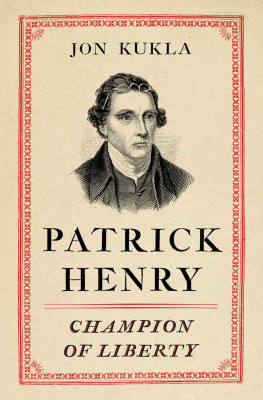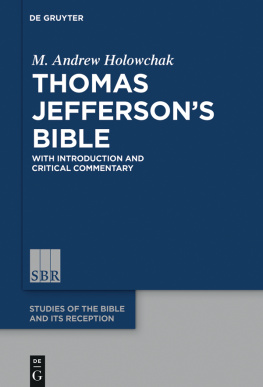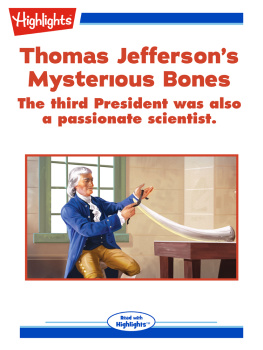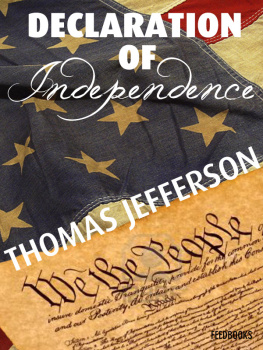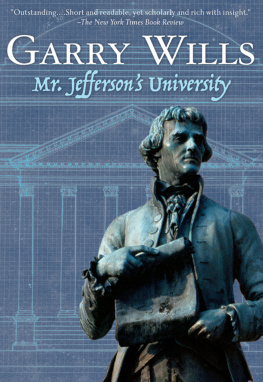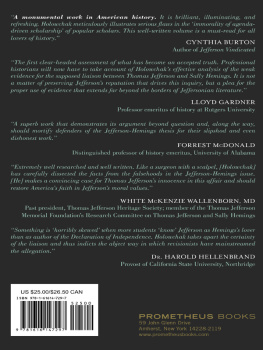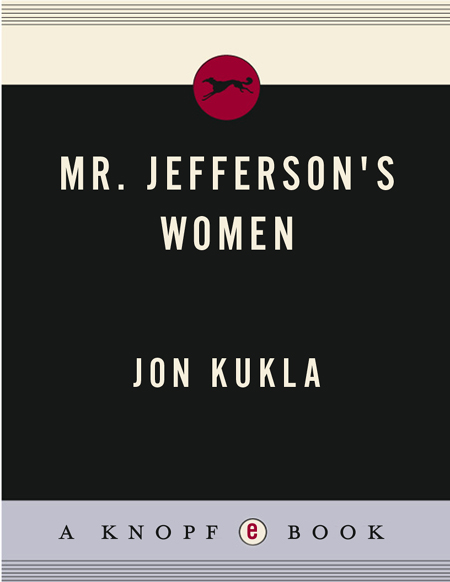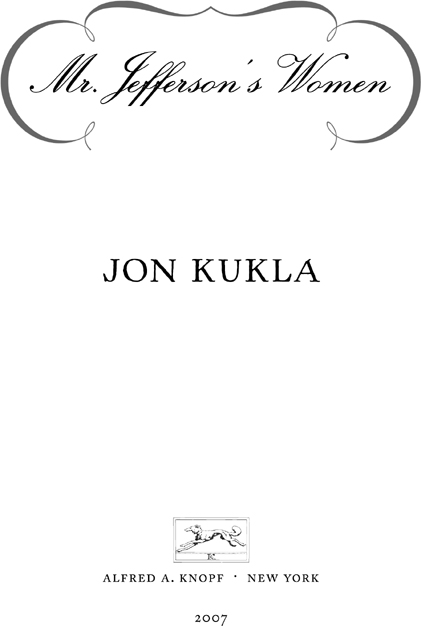ILLUSTRATIONS
2 Thomas Jefferson by Mather Brown, 1786
14 Rosewell depicted on a porcelain punch bowl
18 Anne Randolph by John Wollaston, ca. 1755
42 Chelsea, King William County, Virginia
45 Lucy Moore and Bernard Moore by Charles Bridges, ca. 173543
48 Bernard Moore's lottery announcement, 1768
66 South Pavilion of Monticello
75 Martha Wayles Jefferson's household accounts, 1777
76 Embroidered pincushion made by Martha Wayles Jefferson
83 Passage from Laurence Sterne's Tristram Shandy
87 Maria Louisa Caterina Cecilia Hadfield Cosway
93 Diagram of the Dome of the New Halle aux Bl
122 West faade of Monticello
123 Aerial view of Monticello from the north
163 Elizabeth Leathes Merry by Gilbert Stuart, 1805
174 On the Admission of Women to the Rights of Citizenship, by the marquis de Condorcet
176 A Vindication of the Rights of Woman, by Mary Wollstonecraft
183 President Jefferson's dinner invitation
205 Jefferson's Head and Heart letter to Maria Cosway, 1786
A NOTE ON TEXTS
This book relies heavily on documentary sources, both from manuscripts and from a variety of published editions with differing editorial policies. For the text, so-called accidentals are consistently presented in accord with accepted canons of modern documentary scholarship: sentences begin with capital letters; terminal periods in abbreviations are omitted unless retained in modern usage; superior letters are brought to the line of the text; ampersands and &c are generally spelled out; and Jefferson's persistent use of it's for its is silently corrected. When quoting from modern documentary editions, I generally suppress apparatus used to identify interlineations, encoded words, and readings supplied by a reliable editor. When it is important for the reader to be aware of the original orthography, I comment upon it in the text or notes. Underscored words from manuscript sources are set in italics, and italics are retained from printed sources when originally used for emphasis rather than typographic decoration. The notes identify those instances in which I employ italics to convey my own emphasis within a quotation. All my interpolations in quoted passages are presented within brackets, including the occasional substitution of a noun for a pronoun (e.g., Jefferson's for his) or a third-person for a first-person pronoun (e.g., her for my). Signatures are presented in small caps.
For appendixes A and C, which present significant sources about which controversy sometimes arises, the editorial policy is more literal: ampersands are retained; interlineations are reported in notes; deleted words are shown as struck through; and all the vagaries of punctuation and capitalization are retained. As in my text, all editorial interpolations within quoted texts are presented within square brackets. Explanatory comments in the appendixes are presented in italic type within decorative brackets {thus}.
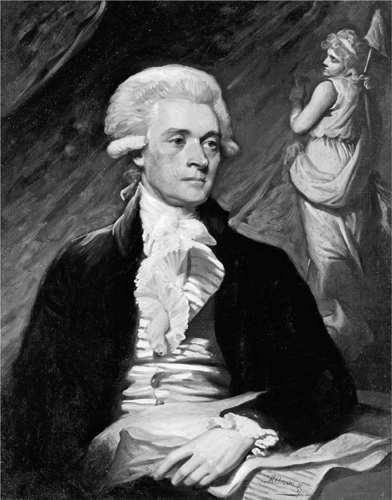
THOMAS JEFFERSON BY MATHER BROWN , 1786
The earliest known portrait of Thomas Jefferson, this likeness derived from sittings with the artist Mather Brown in 1786 during Jefferson's tenure as American minister to France. Jefferson wears the fashionable attire and powdered hair expected of a diplomat to the court of Louis XVI In the background, the female allegorical figure of Liberty holds a Phrygian cap on a liberty polepopular symbols of freedom during the American Revolution and the French Revolution. John and Abigail Adams displayed this portrait in their London home when Adams served as the American minister to Great Britain. She told Jefferson that it dignifies a part of our room, tho it is but a poor substitute for those pleasures which we enjoy'd some months past, when Jefferson and the Adamses were often together in Paris.
Courtesy of the National Portrait Gallery, Smithsonian Institution
(NPG.92.110), bequest of Charles Francis Adams.
Jefferson disliked stuffy people, stuffy houses, stuffy societies. So he changeda few things. Law. Gardening. Government. Architecture.
Of the thousand castles, mansions, chateaux you can walk through today, only Monticello, only Jefferson's own mansion, makes you feel so comfortable you want to live in it.
J. Peterman Company
T HOMAS J EFFERSON did wear simple and comfortable shirts like the one that inspired a clever advertising copywriter for the J. Peterman Company's retail catalogue. The claim that the style is 99% Thos. Jefferson. 1% Peterman may stretch the truth. Simple muslin work shirts were as common among Jefferson's Virginia contemporaries as they were inside the great house at Monticello. Still, the rest of the copywriter's pitch rings true.


